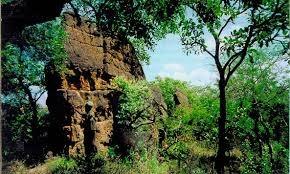The story of Bilikisu Sungbo is one that draws the attention of both locals and foreigners to a village called Oke Eri in Ijebu Ode, Ogun state. Pilgrims from all over the world have been said to come to Oke Eri village where they believe Bilikisu Sungbo is buried.
The Sungbo Eredo is a system of defensive walls and ditches said to have been commissioned by Bilikisu who was believed to be a wealthy queen and complexly built by her slaves in 800–1000.
The wall which was believed to have been built to unify an area of diverse communities into a single kingdom was described by the 1974 edition of the Guinness Book of Records, as the largest earthworks in the world carried out prior to the mechanical era.
The wall of Eredo was brought to international limelight by a British archaeologist, Dr. Patrick Darling and his team from Bournemouth University in 1994.
Although it has been covered by forest, it was described as Africa’s largest single monument, with more earth and rock used to make the wall than was used in the Great Pyramid.
Reports quoted him saying, “The earthwork, which is larger than the pyramids in Egypt, was built in remembrance of some great figure. Stories talk of a powerful goddess or giantess. I don’t want to overplay the Sheba theory, but it cannot be discounted… The local people believe it and that’s what is important.”
Read more on Science Daily.
L’ Eredo di Sungbo è un sistema difensivo costituito da un fossato e da un muro di terra che circonda la città Yoruba di Ijebu-Ode nello stato di Ogun della Nigeria sud-occidentale, che fu capitale del Regno di Ijebu, uno dei regni Yoruba precedenti il periodo coloniale.
Si tratta di un’opera di dimensioni colossali, con una circonferenza di circa 160 km, e racchiude un’area di 40 km (in senso nord-sud) per 35 km (in senso est-ovest). In alcune sezioni il muro raggiunge un’altezza di 20 m.
Fu costruita intorno all’anno 1000 a scopi difensivi. Probabilmente si ispira a simili strutture nella Nigeria occidentale (Ile-Ife. Ilesa e Iya, nel Benin), che costituiscono un sistema di strutture difensive disposto su una lunghezza di circa 6.500 km. Si ritiene che avesse lo scopo di unificare l’area di diverse comunità in un singolo regno.
Una leggenda locale identifica l’opera con monumento eretto per preservare la memoria di una ricca regina, vedova e senza figli, di nome Bilikisu Sungbo, identificata con la regina di Saba (che nel Corano ha il nome di Bilqis): la sua tomba a Oke-Eiri, una città nell’area musulmana a nord, oggetto di pellegrinaggio da parte di cristiani e fedeli delle tradizionali religioni africane.
Il monumento venne studiato da Peter Lloyd alla fine degli anni cinquanta, e di nuovo, quarant’anni dopo da Patrick Darling, dell’ università di Bournemouth.
Puoi approfondire su Science Daily.
@Wizzy, Afro Bodhisattva, Entrepreneur, Physical Anthropologist, Freelance researcher of African Studies, culture, tradition and heritage, CEO Dolomite Aggregates LTD and Founder MBA Métissage Boss Academy & @metissagesanguemisto.







